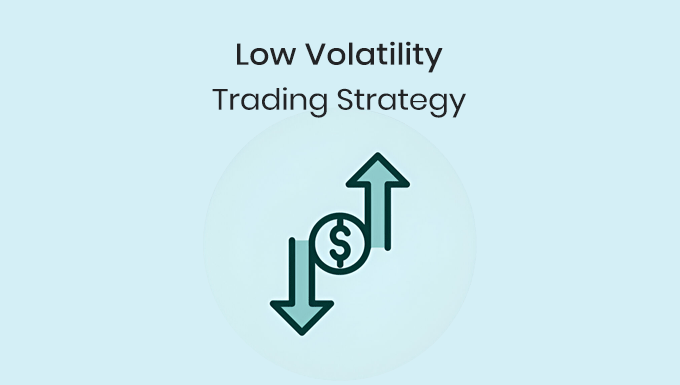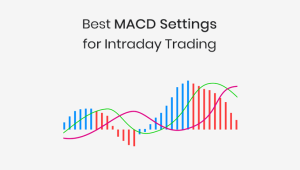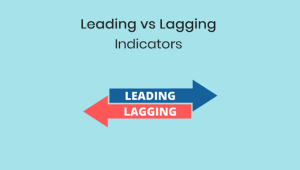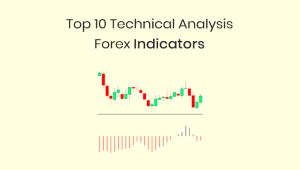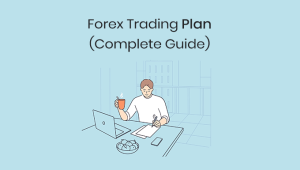A low volatility trading strategy can be very useful to make the most money when the market is quiet and not moving much. While many traders would prefer to trade in high volatility market conditions, there’s a segment of the trading community that loves the predictability and stability offered by periods of low volatility. This article discusses the basics of low volatility forex trading strategy, explaining what low volatility means, its benefits, and how traders can increase its potential to ensure consistent, long-term profits.
Understanding the Basics of Low Volatility
Volatility simply refers to the degree of daily price fluctuations. Low volatility indicates that the price changes are minimal and the market is not moving much.
For many traders, particularly those who likes stability, a low volatility market can be attractive.
Forex markets can experience periods of low volatility for several reasons, such as the absence of major economic news or global events. During these times, major forex pairs might move within tight ranges, offering predictable and manageable risks for traders.
That said, trading in a low volatility markets requires a different approach. Unlike high volatility conditions where swift and sharp price changes are common, low volatility strategies rely on identifying and capitalizing on small price movements over a longer period.
For beginners, understanding the factors that contribute to decreased volatility is crucial. It not only helps in making informed trading decisions but also in devising strategies tailored to the current market conditions.
Advantages of Using a Low Volatility Trading Strategy
Predictability: When the markets are less volatile, they tend to move in more predictable patterns, which, if correctly identified, can lead to consistent profits.
Risk Management: The absence of sharp price swings means that traders can set tighter stop-loss orders without the fear of being prematurely stopped out by a sudden price spike. This allows for more efficient capital allocation and potential increase in risk-reward ratios.
Lower Stress: Trading in a low volatility environment also translates to lower stress. With fewer dramatic price shifts, traders can maintain a more relaxed approach, focusing on longer-term goals rather than minute-by-minute changes.
Cost Savings: During low volatility periods, the bid-ask spread, a primary cost for forex traders, is often narrower. This means traders might benefit from reduced trading costs.
Key Indicators to Detect Low Volatility in the Market
Forex traders use various technical indicators to identify market volatility. Identifying periods of low volatility can provide traders with specific strategic opportunities.
Here’s a deeper look into several key indicators to help spot these periods:
Average True Range (ATR): This indicator provides a measure of market volatility by calculating the average difference between the high and low prices over a specific period. A decreasing ATR indicates reduced volatility, whereas a rising ATR signals increasing volatility.
Bollinger Bands: BB bands consists of 3 bands – the middle band being a simple moving average (SMA) and the outer bands representing standard deviation levels. When the bands contract or come closer together, it’s an indication of reduced volatility. Conversely, when the bands expand, market volatility is increasing.
Relative Strength Index (RSI): While primarily used to detect overbought or oversold conditions, RSI can indirectly infer volatility. In a low volatility environment, RSI tends to oscillate narrowly around its mid-line (50). Breakouts from this range can indicate a potential spike in volatility.
MACD: This trend-following momentum indicator shows the relationship between two moving averages of a currency’s price. When MACD lines converge, or move closely together, it can signify reduced volatility. Divergence, or the lines moving apart, can indicate an uptick in volatility.
Donchian Channels: These channels show the highest high and the lowest low over a set period. Narrowing channels can indicate a period of low volatility, while expanding channels suggest increasing volatility.
These indicators can be powerful tools to detect market volatility. However, for accurate analysis, it’s often recommended to use a combination of indicators rather than relying on just one.
Simple Low Volatility Forex Trading Strategy
1. Analyze the Environment: First, it’s crucial to be sure you’re genuinely in a low-volatility environment. Tools like the Average True Range (ATR) can help in identifying this. A decreasing ATR can signal reduced market volatility.
2. Focus on Range Trading:
-
Identify Support and Resistance: In low-volatility periods, currency pairs often oscillate between established support and resistance levels. Chart patterns, pivot points, and historical price levels can assist in spotting these zones.
-
Enter Near the Boundaries: Buy near the support and sell near the resistance. It maximizes the profit potential and limits risk if a breakout occurs.
3. Utilize Tighter Stop-Losses: With reduced volatility, you won’t require as much room for the price to move before realizing it’s going in an undesired direction. Thus, setting a tighter stop-loss can reduce potential losses.
4. Limit Leverage: Given that significant price movements are less likely, there’s temptation to leverage up to boost potential profits. However, this can be risky. Keep leverage moderate to avoid unexpected shifts.
5. Prioritize Major Currency Pairs: Stick to major pairs like EUR/USD, GBP/USD, and USD/JPY. These pairs have more liquidity and are less susceptible to random spikes than more exotic or lesser-traded pairs.
6. Stay Alert for Breakouts: Just because the market is calm doesn’t mean it will remain so. Use ATR, Bollinger Bands or other similar indicators discussed above to detect potential breakouts. When the bands contract, it often signals a potential significant price movement in the near future.
7. Diversify: Instead of putting all your capital into one pair, consider diversifying across different currency pairs. This can help spread risk, especially if an unexpected event shakes one particular currency pair.
8. Stay Informed: Even during low-volatility periods, it’s essential to stay updated with forex news. Use forex factory economic calendar to review fundamental factors like central bank announcements or geopolitical events can introduce volatility quickly.
9. Consider Longer Time Frames: Intraday charts may show little movement during these periods. Moving to a daily or even weekly chart can present a clearer picture and more substantial trends to trade on.
10. Evaluate and Adjust: At the end of the trading day, review your trades. Understanding what worked and what didn’t is crucial for refining strategies.
Real-Life Examples of Successful Low Volatility Forex Trades
One classic example is during the summer months, when many global markets are quiet. Seasoned traders often capitalize on this predictability, executing range-bound strategies on major currency pairs like EUR/USD, where the price might oscillate between tight levels.
Another instance is post major economic announcements. Often, after a significant event like an interest rate decision, markets might enter a period of low volatility, having already priced in the news. Smart traders, having anticipated this, set their trades to match the new ‘status quo,’ profiting from the market.
In another example, a trader observed the narrowing Bollinger Bands on the GBP/JPY pair, indicating reduced volatility. Capitalizing on this, the trader executed a range trading strategy, buying at support levels and selling at resistance, profiting from the minor oscillations.
Conclusion
Some people might think that low volatility trading in the forex markets means low profit, but that’s not always the case. It represents an alternative approach to trading that requires patience, keen observation, and a strategic mindset. Understanding the fundamentals of the low volatility market, recognizing its signs, and trading with a good low volatility trading strategy can help traders identify profitable trading opportunities with confidence.
FAQs
1. How does low volatility trading differ from high volatility trading?
While both forms of trading operate within the forex market, they cater to different trader profiles. Low volatility trading involves smaller price movements and a steadier market, while high volatility trading is characterized by rapid and significant price changes. Each requires a unique set of strategies and risk management techniques.
2. What are best currency pairs for a low volatility trading strategy?
Certain currency pairs, often termed “major pairs” like EUR/USD or USD/JPY, tend to be more liquid and, thus, can exhibit more stable price movements. However, the volatility of a pair can change based on global economic factors. It’s essential to monitor the market and adjust strategies accordingly.
3. Is low volatility trading suitable for beginners?
Low volatility trading can be an excellent entry point for beginners due to its predictability and reduced risks. However, like any trading strategy, it’s crucial to educate oneself, practice on demo accounts, and seek guidance from experienced traders.
4. How can traders adapt if the market suddenly shifts from low to high volatility?
It’s imperative for traders to remain vigilant. Employing stop-loss orders, diversifying trading portfolios, and regularly consulting volatility indicators can help traders quickly identify and adapt to sudden shifts in market volatility.
5. Are there specific times of the year when the forex market experiences low volatility?
Yes, certain periods, such as major holidays (e.g., Christmas and New Year) or summer months in the northern hemisphere, can witness reduced trading activity and, consequently, lower volatility. However, unexpected global events can always introduce volatility, so continuous monitoring is essential.
